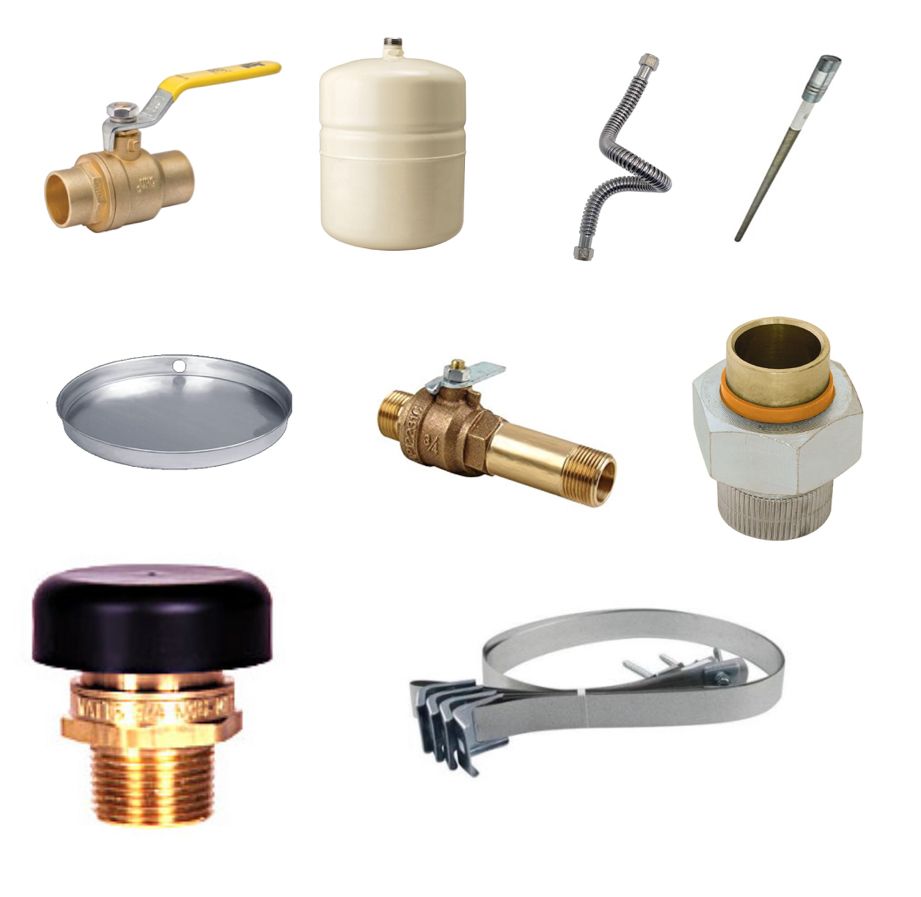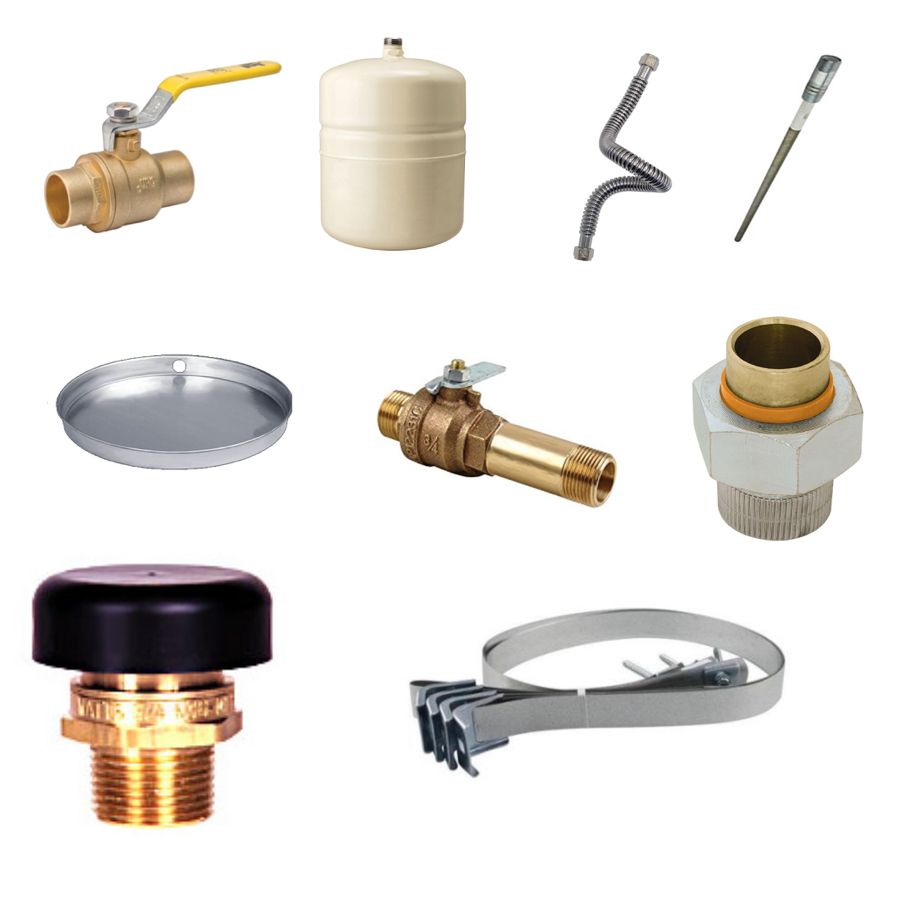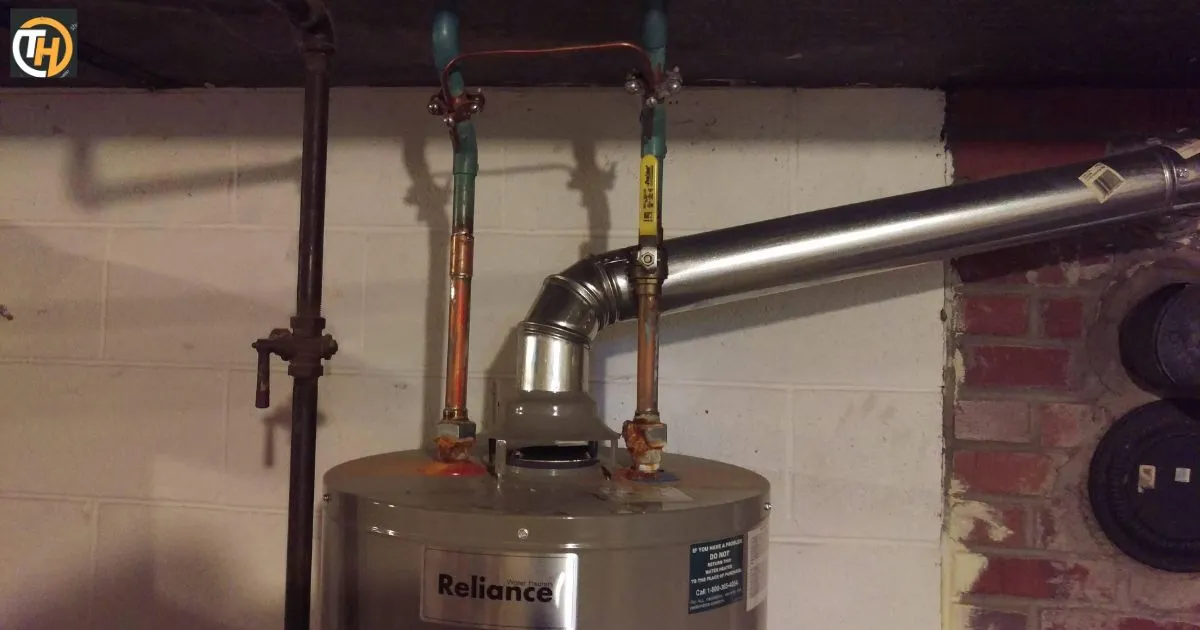A dielectric union for a water heater is a specialized plumbing fitting designed to connect pipes of different metals while preventing corrosion. It typically consists of a plastic or rubber washer that separates the metals, inhibiting the formation of galvanic corrosion.
“Do I Need A Dielectric Union For My Water Heater?” This question often arises during the installation or maintenance of water heaters. It’s a critical consideration to ensure the longevity and efficiency of your water heating system. The dielectric union acts as a protective barrier, preventing the corrosion that may occur when metal pipes with distinct compositions interact.
Installing a dielectric union for your water heater is essential for preventing potential damage caused by corrosion. This plumbing component not only extends the lifespan of your water heater but also ensures the efficiency of the overall plumbing system.
Introduction: Demystifying Dielectric Unions for Water Heaters
The Role of Dielectric Unions in Plumbing Systems
Dielectric unions play a crucial role in water heater installations, mitigating the risk of corrosion and prolonging the lifespan of the system. This section delves into the fundamental purpose and significance of dielectric unions within plumbing systems, setting the stage for a comprehensive exploration.
The Necessity of Dielectric Unions in Water Heater Connections
When linking galvanized steel pipes or tank nipples to copper pipes in water heater installations, a crucial component comes into play: the dielectric union. Its primary function is to prevent direct contact between the pipes, a scenario that could lead to the generation of electric and corrosive charges.
Featuring an insulating sleeve and rubber gasket, dielectric unions act as a barrier, effectively separating different metals within the plumbing system. It’s worth noting that many water heaters equipped with flexible copper connector hoses often integrate a plastic washer, essentially serving as a built-in dielectric union.
However, if the water heater is already equipped with dielectric nipples, the use of additional dielectric unions becomes unnecessary. These nipples inherently possess the characteristics required to prevent the adverse effects of metal-to-metal contact, simplifying the installation process for homeowners.
Why Understanding Dielectric Unions Matters for Homeowners
For homeowners, a clear understanding of dielectric unions is vital for making informed decisions about water heater installations. This subsection emphasizes the practical implications of incorporating dielectric unions, highlighting the benefits they bring in terms of preventing corrosion and maintaining water heater efficiency.
Understanding Dielectric Unions: What They Are and How They Work

Components of Dielectric Unions: Breaking Down the Mechanics
To grasp the functionality of dielectric unions, it’s essential to delve into their components and mechanics. This part breaks down the structure of dielectric unions, explaining how the combination of dissimilar metals and insulating materials effectively prevents galvanic corrosion in water heater systems.
Dielectric vs. Standard Unions: A Comparative Analysis
Understanding the key differences between dielectric unions and standard unions is crucial for homeowners. This section provides a comparative analysis, exploring the pros and cons of each, empowering individuals to make informed choices when selecting the most suitable union for their water heaters.
Importance of Dielectric Unions in Water Heater Installations
Preventing Galvanic Corrosion: The Primary Function of Dielectric Unions
At the core of their importance, dielectric unions act as a barrier against galvanic corrosion. This subsection illuminates the process by which these unions safeguard water heaters from the corrosive effects of dissimilar metals coming into contact, ensuring the longevity of the system.
Dielectric Union Sizing: Matching the Union to Your Water Heater
Selecting the right size for a dielectric union is a critical aspect of its effectiveness. Here, we explore the considerations involved in sizing dielectric unions appropriately for water heaters, addressing the importance of this aspect in optimizing their performance.
Types of Dielectric Unions: Choosing the Right One for Your Water Heater

Threaded vs. Flanged Dielectric Unions: Tailoring Choices to Installation Needs
The diversity in dielectric union types allows for customization based on specific installation requirements. This part elucidates the differences between threaded and flanged dielectric unions, guiding homeowners in selecting the most suitable option for their water heater setups.
Dielectric Union Materials: Exploring Options for Maximum Compatibility
Dielectric unions are crafted from various materials, each with its own set of advantages. Exploring the options in materials, such as brass, plastic, or stainless steel, enables homeowners to choose dielectric unions that align with the composition of their water heaters, optimizing performance and longevity.
Dielectric Union vs. Other Connection Methods: Pros and Cons
Dielectric Unions vs. Dielectric Nipples: Making Informed Comparisons
While dielectric unions are prevalent, dielectric nipples also serve a similar purpose in preventing corrosion. This section draws a comparison, outlining the pros and cons of dielectric unions versus dielectric nipples, aiding homeowners in making educated decisions for their water heater connections.
Compression Fittings and Dielectric Unions: Weighing the Options
Another alternative to dielectric unions is the use of compression fittings. This subsection navigates the landscape of compression fittings and dielectric unions, discussing the advantages and disadvantages of each, and offering a comprehensive guide for homeowners considering various connection methods.
Local Building Codes: Navigating Requirements for Dielectric Unions
Understanding Building Code Mandates: Dielectric Union Compliance
Dielectric unions must align with local building codes to ensure safe and compliant water heater installations. Here, we delve into the intricacies of building code mandates related to dielectric unions, guiding homeowners on the necessary compliance measures for seamless installations.
Local Variations: Adapting to Specific Building Code Requirements
Building codes may vary across regions, influencing the specifications for dielectric unions. This part addresses the importance of adapting to local variations, providing insights into how homeowners can navigate specific building code requirements to guarantee adherence.
DIY Installation: Steps for Adding a Dielectric Union to Your Water Heater
DIY-Friendly Dielectric Union Installation: Step-by-Step Guide
Empowering homeowners with the knowledge and confidence to undertake DIY installations is the focus of this section. A step-by-step guide walks through the process of adding a dielectric union to a water heater, ensuring a clear and accessible roadmap for those opting for a hands-on approach.
Common Pitfalls: Avoiding Mistakes in DIY Dielectric Union Installation
While DIY installations are feasible, they come with potential pitfalls. This subsection highlights common mistakes to avoid during the installation of dielectric unions, offering valuable insights to homeowners to enhance the success of their DIY endeavors.
Signs of Dielectric Union Issues: When Replacement Is Necessary
Identifying Warning Signs: Visual Cues of Dielectric Union Problems
Recognizing the signs of dielectric union issues is pivotal for timely interventions. This part provides a visual guide to identifying common warning signs, such as corrosion, leaks, or discoloration, indicating when homeowners should consider replacement for optimal water heater performance.
Performance Impact: How Dielectric Union Issues Affect Water Heater Functionality
Beyond visual cues, dielectric union problems can impact the overall functionality of water heaters. This subsection explores the performance implications of dielectric union issues, emphasizing the importance of swift replacement to maintain the efficiency of the water heating system.
The Corrosion Conundrum: How Dielectric Unions Prevent Water Heater Damage
Galvanic Corrosion Explained: The Culprit Dielectric Union Combat
To truly appreciate the preventive role of dielectric unions, understanding galvanic corrosion is essential. This section delves into the mechanics of galvanic corrosion, shedding light on how dielectric unions act as guardians against this corrosive force, safeguarding water heaters.
Extended Lifespan: Dielectric Unions as Protectors of Water Heater Integrity
Dielectric unions contribute significantly to extending the lifespan of water heaters, including those connected with a flex hose. Here, we explore the symbiotic relationship between dielectric unions and water heaters, showcasing how their presence ensures prolonged integrity and functionality, even when a flex hose is part of the installation.
Temperature and Pressure Relief Valve
The Role of T&P Relief Valves: Harmonizing Functions with Dielectric Unions
Temperature and Pressure (T&P) relief valves work in tandem with dielectric unions to maintain optimal conditions within water heaters. This part elucidates the collaborative functions of T&P relief valves and dielectric unions, underscoring the importance of their coordinated efforts.
| Key Point | Description |
| Purpose of Dielectric Unions | Examining the role of dielectric unions in preventing electric and corrosive charges in water heaters. |
| Water Quality Considerations | Analyzing how water quality impacts the longevity of dielectric unions, offering insights for homeowners. |
| Maintenance Tips | Providing guidance on routine checks and DIY maintenance to prolong the lifespan of dielectric unions. |
| Common Misconceptions | Dispelling myths surrounding dielectric unions and promoting educational outreach for better understanding. |
| Professional Installation | Discussing scenarios where professional expertise is crucial for complex dielectric union installations. |
| Conclusion | Summing up the significance of dielectric unions in ensuring water heater longevity and empowering homeowners with informed decision-making. |
FAQs
Q: Can I connect PEX directly to an electric water heater?
A: Yes, if compliant with manufacturer instructions and local codes.
Q: What precautions are needed for PEX tubing near a gas water heater exhaust vent?
A: Maintain at least a 6-inch clearance; 1 inch for specific vent piping.
Q: Do dielectric unions prevent electric and corrosive charges in water heaters?
A: Yes, by separating different metals to prevent direct contact.
Q: When are professional installations of dielectric unions advisable?
A: For complex installations or when seeking expert advice.
Q: Are dielectric unions necessary if a water heater already has dielectric nipples?
A: No, dielectric unions are not needed in this case.
Conclusion
Understanding the role of dielectric unions in water heater installations is paramount for homeowners seeking to maintain the longevity and efficiency of their plumbing systems. By preventing the adverse effects of metal-to-metal contact. These unions play a crucial role in averting electric charges and corrosion, safeguarding the integrity of the entire setup.
Taking control of water heater maintenance involves not only recognizing the necessity of dielectric unions but also proactively managing their performance. As we wrap up this comprehensive guide, homeowners are encouraged to embrace informed decision-making and engage in routine maintenance. When needed, seek professional advice for complex installations.











